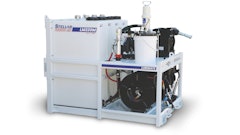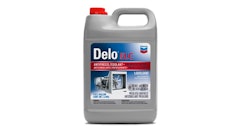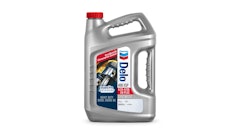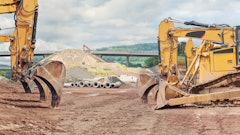
Proactive equipment maintenance practices are critical today as new and used equipment prices rise and component supply chain issues continue. You need to make the equipment currently in your fleet last longer and maximize equipment uptime.
In addition, finding employees is tough, so it’s essential to give them the equipment and tools needed to work efficiently. Making their jobs painless is an excellent way to help retain them.
Adding a mobile lube system to your equipment fleet is one way to excel in both areas. Lube systems are at the heart of any proactive preventive maintenance (PM) program. They will help your service technician(s) work more efficiently and stay cleaner on the job.
As with any equipment, you have many options when it comes to spec’ing out a mobile lube system. To make sure you get the right system for your company’s needs, you need to dive deeper into the following areas.
Lube system mobility
Whether you bring the fluid to the machine or the machine to the fluid, you’ll be money and time ahead when you add a mobile lube system to PM efforts. Lugging around buckets and barrels of oil and hydraulic fluids is labor intensive and messy, and you’ll often get charged more when purchasing fluids in smaller containers that are easier to transport.
Mobile lube systems come in many shapes and sizes. Deciding which one is right for you starts with determining where it will be used. Your options range from lube carts, skids, trailers, lube bodies and trucks to building a customized system.
To decide which option is suitable for your needs, you need to look at how your crew works. If you are only doing fluid exchanges back in the shop bay, you may be able to get by with a lube cart, depending on your shop floor’s layout. However, for jobsites, you may want to consider the benefits of using a mobile solution.
Choosing a mobile solution for a jobsite depends on the application and site conditions. If your typical workload involves working on the same site for long periods, you may want to consider a mounted skid system. If you would prefer a system that can top-off fuels as well as refuel equipment on site, a fuel and lube trailer may be what you should consider.
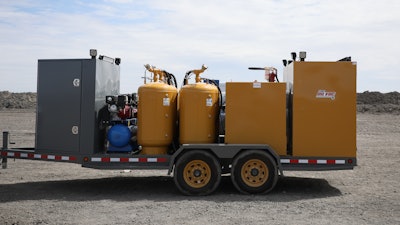 Mobile lube systems come in many shapes and sizes. Your options range from lube carts, skids, trailers, lube bodies and trucks to building a customized system.Sage Oil Vac
Mobile lube systems come in many shapes and sizes. Your options range from lube carts, skids, trailers, lube bodies and trucks to building a customized system.Sage Oil Vac
Size and transportability are also considerations. When working in tight areas, you will want a system that is small and maneuverable so you can bring the system to the machine. If your equipment fleet is spread out across one large job or many projects, you will want a system that can be easily transported.
Lube system size and capacity
The next step is to dial in the size and capacity of needs for a mobile lube system. This requires determining the number of tanks and fluid capacities required.
Mobile lube equipment typically includes two to eight tanks ranging from 10 to 250 gal. The size and number of tanks needed depends on the size of the equipment in your fleet and what you intend to do with the mobile lube system.
To determine the number of tanks, consider the different fluids your equipment requires (engine oil, hydraulic fluid, DEF, etc.). Then look at the applications you will need to perform.
For just topping off fluids in the morning and greasing machines, you can get by with lube equipment with smaller capacity tanks. But if you want to perform 250- to 300-hour PMs on jobsites, you will need a mobile lube system that can hold large volumes of fresh fluids, including engine oil, hydraulic fluids and DEF, as well as a large waste oil tank. For 1,000- to 2,000-hour PMs in the field, even larger tanks will be required.
If you operate a more extensive fleet of equipment, you may want to invest in a few different lube systems, including those that stay on site for topping off fluid levels and those that can travel with the service technician for performing oil changes.
CDL Requirements
To go along with mobility and fluid capacities, you need to think about how your mobile lube system will be transported up and down the road. Smaller trailered systems can be pulled to and from the jobsite. But if you’re going to be stepping up to a commercial lube/fuel truck, you need to start thinking about commercial driver’s license (CDL) requirements.
Typical truck mobile lube systems range from Class 5 to Class 8, which represents a specific gross unit weight range. Once that weight gets above 26,000 lbs., the driver of the vehicle must have a CDL. So, you will have to determine if you have service technicians who have a CDL, hire techs that do or take steps to help them get a license.
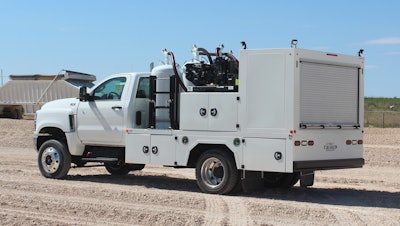 Typical truck mobile lube systems range from Class 5 to 8. While there are trade-offs in capacity, a Class 5 or 6 service truck will note require a driver with a CDL.Sage Oil Vac
Typical truck mobile lube systems range from Class 5 to 8. While there are trade-offs in capacity, a Class 5 or 6 service truck will note require a driver with a CDL.Sage Oil Vac
Lube system pump type
With sizing out of the way, now it’s time to evaluate the mechanics of the mobile lube system, specifically, the pumps used to transfer fluids.
Most lube equipment manufacturers use mechanical pumps, which have several drawbacks. Maintenance and repair are the most significant ones. Failing pumps that need to be replaced or rebuilt are typical. And since each tank on a mobile lube system has a diaphragm and a mechanical pump, maintenance and repair needs for these systems can be time consuming and costly, including equipment downtime.
A more reliable fluid system option is vacuum technology such as Sage Oil Vac provides. It uses compressed air to push oil out of the tank, with no pump required. To fill the tanks or to suction up used oil, you simply need to reverse the process to create a vacuum within the tank. When the valve is opened, suction is created as the tank equalizes. It’s a faster process than with a mechanical pump.
Also, since there are no moving parts inside the tanks, vacuum systems are completely sealed. Mechanical pump systems require air breathers so that tanks can vent, which can lead to contamination over time.
Accessories for mobile lube systems
After determining the main spec requirements to service your equipment fleet, you should consider what accessories are available to help reduce the chance of fluid spills and speed up the process. The following are accessories most widely used by contractors and fleet managers operating Sage mobile lube systems:
- Grease kits to help speed up daily machine maintenance.
- Filter draining receptacles to help reduce the likelihood of filters dripping oil all over the service vehicle.
- Drain pans and drain plugs that allow a direct connection between the hoses on the lube system and a machine’s drain pan; these options will reduce the risk of spilling fluids and make oil changes faster.
- Specific to Sage Oil Vac, the NextLube monitoring system has a touchscreen display that allows the service technician to more closely track how much fluid they are adding.
- Barrell straws (exclusive to Sage Oil Vac) eliminate the need for transfer pumps during bulk oil or drum storage; they ensure the vacuum process is 100% self-contained to reduce spills and prevent exposure to outside contaminants.
Caring for equipment and crew
Preventive maintenance is critical to getting the most out of every machine in your fleet. Given the current market conditions, that’s never been more critical. Adding a mobile lube system will go a long way in helping your team take more proactive care of equipment.
A lube system is also a great way to recruit and retain quality service technicians. You’re making their job less labor intensive and keeping them cleaner after a hard day’s work, since they don’t have to handle open containers of fresh fluids and waste oil.
Of course, mobile lube systems aren’t just a good addition when equipment, labor and parts are hard to come by. They are always an efficient option to help you get the most from your machinery and your people.







